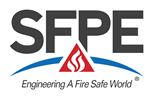FEMTC 2018
Setting Wildfire Evacuation Triggers by Coupling Fire and Traffic Simulation Models: A Spatiotemporal GIS Approach 
Dapeng Li - South Dakota State University
Abstract
Wildfire evacuation triggers refer to prominent geographic features used in wildfire evacuation practices, and when a fire crosses a feature, an evacuation warning is issued to the communities or firefighters in the path of the fire The existing wildfire trigger modeling methods consider evacuation time as an input from a decision maker and employ fire spread modeling and GIS to create a trigger buffer around a threatened asset This paper substantially improves on previous methods by coupling fire and traffic simulation models to set triggers, which allows us to estimate evacuation time using a traffic simulation model rather than relying on expert judgment Specifically, we propose a three-step method within a spatiotemporal GIS framework to couple these models and to evaluate the value of the generated trigger buffers The first step uses traffic simulation to estimate the total evacuation time for a threatened community The second step derives the cumulative probabilities for distinct evacuation times from multiple simulations and generates corresponding probability-based trigger buffers In the last step, we evaluate the value of the generated buffers by coupling fire and traffic simulation models to examine the spatial configurations of fire perimeters and evacuation traffic A case study of Julian, California is used to test the proposed method The results from two evacuation scenarios with different travel demand indicate that a larger trigger buffer (more lead time) will be needed for higher levels of evacuation travel demand For example, the time required to guarantee that 95% of the evacuating residents arrive at the safe area as a fire approaches a community is estimated at 160 min for one scenario but 292 min if the travel demand is doubled The resulting framework advances the dynamic representation of evacuation traffic in wildfires and improves our understanding of wildfire evacuation timing and decision making The paper concludes with a discussion of the strengths and limitations of the proposed method, as well as future research directions.
Presentation
Resources
| Paper | Presentation | ||
|---|---|---|---|
| HTML | HTML | ||
| Resources Archive File (.zip) | |||

